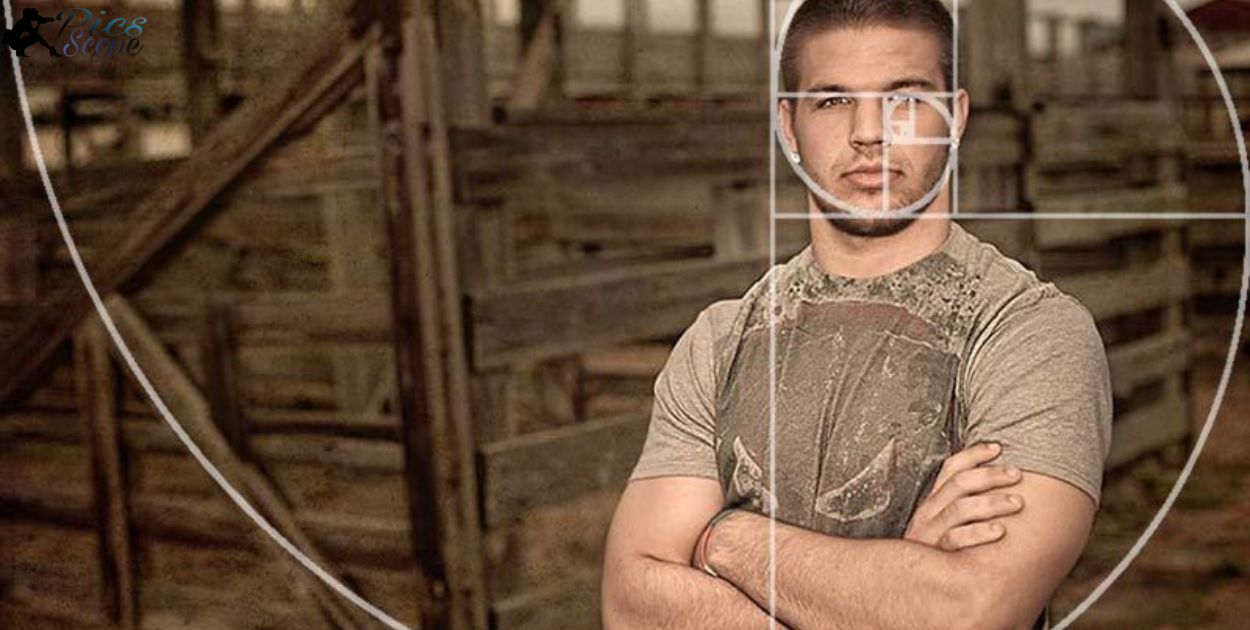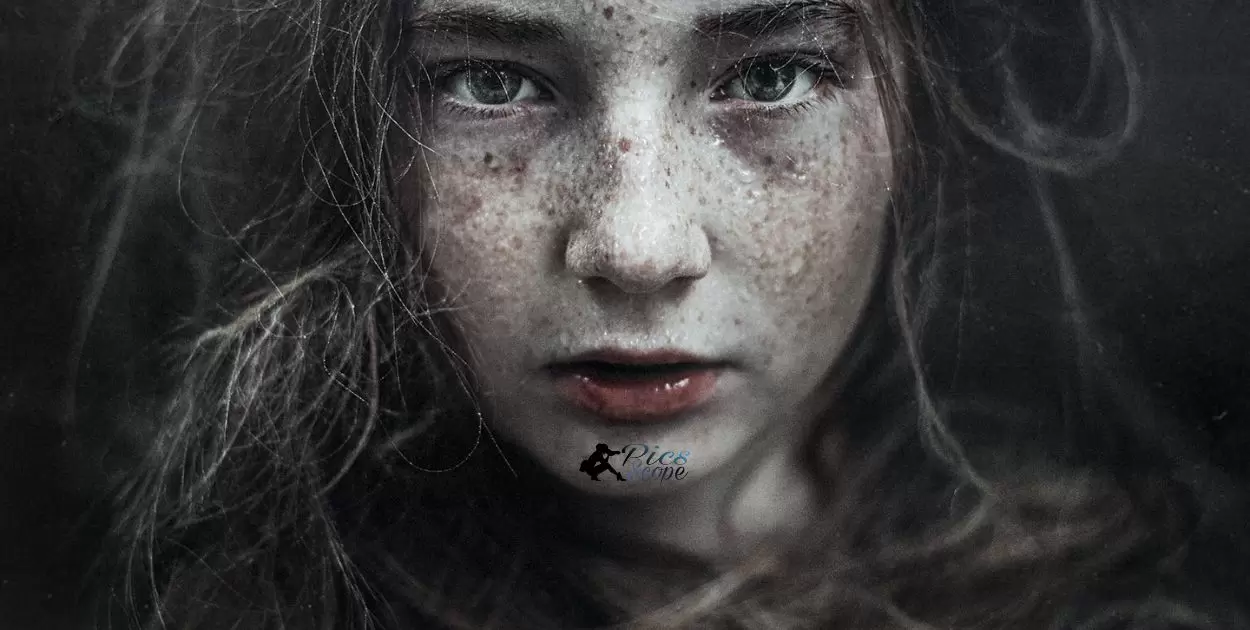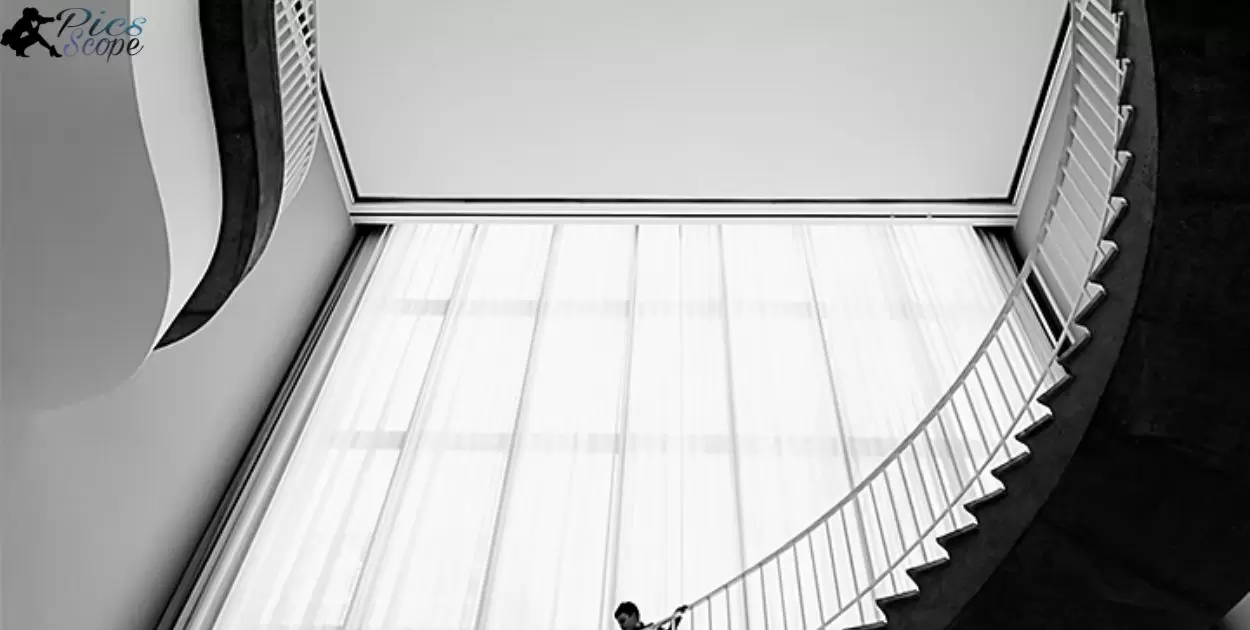Unity in Photography refers to the cohesive integration of elements in an image to create a harmonious and visually pleasing whole. It involves organizing and arranging visual components such as shapes, colors, and subjects in a way that they work together seamlessly.
The Principle of Unity in Photography is the secret sauce that transforms a mere collection of elements into a captivating visual symphony. Imagine your photo as a well-orchestrated melody where each element plays a crucial role. This principle ensures that every component contributes to the overall narrative, capturing the viewer’s attention and curiosity.
In the realm of photography, achieving unity is like assembling the pieces of a puzzle to form a complete picture. It involves careful consideration of composition, lighting, and subject matter. The Principle of Unity creates a sense of coherence, guiding the viewer’s gaze through the image while conveying a unified message or story.
What is the Essence of Unity in Photography?
In photography, unity is the key to creating a strong and cohesive visual story. It’s about bringing all the elements together in a way that makes the image feel connected and harmonious. When elements in a photo work together, they guide the viewer’s eye and create a more impactful and memorable experience.
Photographers achieve unity through thoughtful composition and arrangement of elements. By consciously considering how each component contributes to the overall narrative, they ensure that the image tells a compelling story. Whether through color, shape, or subject matter, unity in photography is the essential ingredient that transforms a collection of elements into a unified and engaging visual masterpiece.
How Does Unity Affect the Viewer’s Perception?
Unity in photography greatly influences how viewers perceive an image. When elements within a photograph seamlessly come together, the viewer experiences a sense of cohesion and harmony. This visual unity directs the viewer’s attention purposefully, creating a more engaging and enjoyable experience.
Photographers achieve unity by strategically arranging elements, ensuring they work together rather than compete for attention. This deliberate approach leads to a clearer and more impactful message.
Why is Cohesiveness Crucial in Photographic Compositions?

In photography, cohesion is vital because it helps the viewer understand and connect with the story told in the image. When elements in a photograph work together, it creates a clear and engaging narrative. Without cohesion, images may appear chaotic or confusing, leaving the viewer disconnected from the intended message.
Photographers achieve cohesion by using the principle of unity. This involves carefully arranging visual elements, such as color, shape, and texture, to form a harmonious whole. By consciously applying the principle of unity, photographers ensure that every element contributes to the overall message, making their compositions more impactful and accessible to the audience.
Can Unity be Achieved Through Different Photographic Elements?
In photography, unity is the key to creating visually appealing images. Various elements, such as composition, color, and subject matter, play crucial roles in achieving this unity. By carefully considering how these elements work together, photographers can create a harmonious and cohesive narrative in their photos.
When photographers consciously combine different elements without relying on a singular focal point, they achieve a sense of unity. This can be seen in the seamless interaction of colors, the balanced arrangement of subjects, and the overall composition of the image.
Through intentional choices in framing and arrangement, photographers can ensure that unity becomes a guiding principle in their work, resulting in captivating and well-balanced photographs.
What Role Does Lighting Play in Establishing Unity?
- Setting the Tone: Lighting sets the mood and tone of a photograph, influencing the viewer’s perception and emotional response.
- Highlighting Details: Proper lighting emphasizes details, helping to draw attention to specific elements and creating a sense of coherence.
- Creating Depth: Well-managed lighting adds depth to the image, contributing to the overall three-dimensional feel and enhancing unity.
- Balancing Contrast: Through lighting, photographers can balance contrast, ensuring that different elements in the frame work together seamlessly.
- Establishing Continuity: Consistent lighting across the scene helps establish visual continuity, reinforcing the unity of the composition.
- Guiding Focus: Strategic lighting directs the viewer’s focus, guiding their gaze through the image and contributing to a unified storytelling experience.
- Enhancing Atmosphere: The play of light and shadow contributes to the atmosphere of the photograph, playing a significant role in creating a unified visual narrative.
How Does the Principle of Unity Enhance Photographic Storytelling?
Photographic storytelling gets a boost from the principle of unity. It helps in creating a cohesive and impactful narrative. By using unity, photographers connect different elements in a photo, making it easier for viewers to understand and appreciate the story being told.
In practical terms, unity ensures that all elements in a photograph work together harmoniously. It guides the viewer’s eye seamlessly through the image, avoiding confusion and enhancing the overall visual experience.
What Impact Does Unity Have on Conveying a Message?
Unity in photography is like a glue that holds all the elements together in a picture. It helps tell a clear and powerful story without confusion. When everything in a photo feels connected, the message becomes more straightforward and impactful.
Imagine a photo where every element seems to work independently. It can create a sense of chaos, making it difficult for the viewer to understand the intended message. When unity is present, the viewer can easily grasp the message as elements complement each other, contributing to a harmonious visual narrative. In essence, unity is the key to ensuring that a photograph effectively communicates its intended message.
How Can Compositional Techniques Contribute to Unity?
| Technique | Description |
| Rule of Thirds | Dividing the frame into thirds, placing key elements at the intersections. |
| Leading Lines | Guiding the viewer’s eye through the image with visual pathways. |
| Symmetry | Creating balance by mirroring elements across a central axis. |
| Color Harmony | Using a consistent color palette to enhance visual cohesion. |
In photography, compositional techniques play a crucial role in fostering unity within an image. The Rule of Thirds helps in strategically placing elements, while Leading Lines guide the viewer seamlessly.
Symmetry contributes to balance, and Color Harmony ties everything together. These techniques collectively enhance the overall unity of a photograph, ensuring a cohesive and visually compelling narrative.
Why is Harmony Among Elements Essential in Storytelling Photography?

In storytelling photography, harmony among elements is crucial. It helps create a visually appealing narrative that captivates the viewer’s attention. When elements in a photograph work together seamlessly, the story becomes more engaging and easier to understand.
Imagine a photograph where every element complements the others – colors, shapes, and subjects all harmonizing. This harmony allows the viewer to focus on the story being told, without distractions.
It’s like a well-orchestrated symphony where each instrument plays its part, contributing to the overall harmony of the piece. In storytelling photography, achieving this unity among elements is the key to making a lasting impact on the viewer.
Can Unity Strengthen the Emotional Impact of a Photograph?
In the realm of photography, achieving unity is crucial when aiming to make macro photos of ants. Unity serves as a potent force to intensify emotional impact in the visual storytelling process.
When elements within a photo, like color, composition, and subject matter, work seamlessly together, they create a harmonious narrative that ensures viewers emotionally connect with the miniature world of ants, evoking a more profound and memorable response.
Photographers, particularly those looking to make macro photos of ants, skillfully wield unity as a tool to amplify emotions. Through strategic alignment of visual elements, they guide the viewer’s gaze into the intricate details of the ant world.
This deliberate approach results in a powerful and immediate emotional resonance, making the macro photograph not only impactful but also a lasting and memorable portrayal of the tiny yet fascinating subject.
Why is Unity Considered the Backbone of Professional Photography?
In professional photography, unity acts as the backbone, bringing together various elements to create a cohesive and impactful image. Photographers use this principle to ensure that every part of the photo contributes to a unified narrative.
By skillfully arranging elements such as composition, color, and subject matter, photographers guide the viewer’s focus and deliver a clear and compelling message without distractions. The significance of unity in photography lies in its ability to elevate an image from a collection of individual elements to a harmonious whole.
When every aspect of a photograph works together seamlessly, it enhances the overall visual experience. This intentional approach to composition allows photographers to communicate their intended message effectively and leaves a lasting impression on viewers.
How Does Unity Reflect a Photographer’s Skill and Vision?
Unity in photography is not merely a compositional element but a reflection of a photographer’s expertise and artistic vision. The ability to seamlessly integrate various elements within a frame demonstrates mastery over technique and an acute understanding of visual storytelling. A unified photograph speaks volumes about a photographer’s attention to detail, creativity, and ability to evoke emotions.
| Aspect of Unity | Indication of Skill & Vision |
| Composition | A well-composed image showcases a photographer’s ability to balance elements effectively, guiding the viewer’s eye and conveying a clear message or emotion. |
| Harmony of Elements | Achieving harmony among various elements, such as color, shape, and texture, demonstrates a photographer’s keen sense of aesthetics and vision for the final image. |
| Narrative Cohesiveness | A photograph that tells a cohesive story indicates a photographer’s skill in capturing moments that resonate with viewers, revealing depth in both technique and narrative. |
| Emotional Impact | Creating a strong emotional connection through a unified composition reveals a photographer’s ability to evoke feelings and convey a distinct mood, showcasing their artistic vision. |
| Technical Proficiency | Consistent application of technical skills to achieve unity, such as proper exposure, focus, and post-processing techniques, reflects a photographer’s dedication to their craft and attention to detail. |
This table highlights various aspects of unity in photography and how they serve as indicators of a photographer’s skill and vision, emphasizing the importance of cohesion and creativity in creating impactful images.
Why Do Professional Photographers Prioritize Cohesiveness?
Professional photographers prioritize cohesiveness because it strengthens their message. When elements in a photo work together, it creates a clear and powerful story. This clarity grabs viewers’ attention instantly.
Moreover, cohesive photos stand out in a crowded field. They make a lasting impression on viewers. When professionals focus on unity, their work becomes memorable and resonates with audiences. This strategy sets them apart, showcasing their expertise and vision in the competitive world of photography.
Can the Lack of Unity Deter Professional Recognition?

Lack of unity in a photograph can hinder a photographer’s professional recognition. When elements in a photo don’t come together harmoniously, viewers may find the image confusing or disorganized. This confusion can lead to a diminished impact, making it harder for photographers to stand out in a competitive field.
Professional recognition often hinges on the ability to convey a clear message or emotion through photography. When unity is lacking, the intended message may get lost or diluted. As a result, photographers who consistently produce unified and cohesive images are more likely to gain recognition for their skill and vision.
How Does Unity Differentiate Amateur from Professional Shots?
Unity serves as a distinguishing factor between amateur and professional shots in photography. Professionals often excel in creating cohesive compositions that engage viewers and convey a clear message or emotion. In contrast, amateur photographs may lack this cohesion, leading to images that appear disjointed or unpolished.
| Aspect of Unity | Differentiating Factor |
| Composition | Professionals master composition, ensuring balance and harmony, while amateurs may struggle to arrange elements effectively. |
| Harmony of Elements | Achieving harmony among various elements like color and texture is a skill professionals possess, setting their work apart from amateurs. |
| Narrative Cohesiveness | Professionals tell a cohesive story through their images, capturing moments that resonate, whereas amateurs may produce disjointed narratives. |
| Emotional Impact | Creating a strong emotional connection is typical of professional shots, whereas amateur photos may lack the depth to evoke feelings effectively. |
| Technical Proficiency | Professionals demonstrate technical prowess in achieving unity, while amateurs may have inconsistencies in exposure, focus, or post-processing. |
This table outlines key aspects of unity in photography that differentiate professional shots from amateur ones, emphasizing the importance of cohesion, skill, and artistic vision in producing impactful images.
What Techniques Can be Employed to Achieve Unity in Photography?
Unity in photography relies heavily on specific techniques that photographers use intentionally. One crucial method is maintaining a balance within the frame. By positioning elements strategically, a photographer can guide the viewer’s attention to the main subject.
Another essential technique is using complementary colors to create harmony. When colors work together seamlessly, the image feels cohesive and visually appealing. Additionally, framing plays a vital role in achieving unity. By carefully framing a shot, a photographer can eliminate distractions and emphasize the central theme or subject.
In summary, techniques such as balancing elements, utilizing complementary colors, and strategic framing are instrumental in achieving unity in photography. These methods not only enhance the visual appeal but also convey the intended message more effectively to the viewers.
How Can Balance and Symmetry Contribute to Unity?
Balance and symmetry play crucial roles in creating unity in photography. When elements are evenly distributed, it creates a sense of harmony and order. This balance captures the viewer’s attention and helps convey the intended message clearly.
Symmetry, on the other hand, offers a sense of equilibrium within the frame. When subjects or elements mirror each other, it provides a pleasing and satisfying visual experience. By incorporating balance and symmetry, photographers can guide the viewer’s gaze effectively, ensuring that every part of the image contributes to a cohesive whole.
Why is Color Harmony Integral to Achieving Photographic Unity?
Color harmony is essential in photography because it creates a pleasing visual experience for viewers. When colors work well together, they enhance the overall mood and message of a photograph. By carefully selecting and coordinating colors, photographers can direct attention, evoke emotions, and emphasize subjects effectively.
Color harmony helps in establishing a cohesive and balanced composition. When colors complement each other, they contribute to a unified look and feel. This unity ensures that viewers focus on the intended subject without distractions, making the image more impactful and memorable.
How Can Framing and Perspective Enhance Unity?
Framing and perspective are essential tools in photography. They help to guide the viewer’s focus and create a sense of depth within the image. By choosing the right frame, photographers can emphasize their subject and eliminate distractions.
Perspective adds another layer of depth. It allows photographers to showcase different viewpoints, leading to more engaging and dynamic compositions. Together, framing and perspective work to enhance unity by ensuring that every element within the frame complements the overall message or theme of the photograph.
What Role Does Repetition and Pattern Play in Establishing Unity?
- Visual Consistency: Repetition creates a sense of rhythm and consistency within a photograph, guiding the viewer’s eye and establishing a cohesive visual experience.
- Enhanced Composition: By incorporating patterns, photographers can structure their images in a way that emphasizes balance and harmony, contributing to a unified composition.
- Emotional Impact: Repetition and pattern can evoke specific emotions or themes, allowing photographers to convey their intended message more effectively.
- Highlighting Subjects: Utilizing repetition can draw attention to a particular subject or element within the frame, emphasizing its significance within the overall narrative.
- Creating Depth: Patterns can add depth and dimension to an image, enhancing its visual appeal and creating a more immersive viewing experience.
How Does Unity Impact Different Genres of Photography?
Unity plays a crucial role across various genres of photography. In landscape photography, unity helps in creating a harmonious balance between elements like mountains, water, and sky. This cohesive approach brings out the beauty and serenity of nature, capturing the essence of a scene in a unified manner.
In portrait photography, unity ensures that the subject stands out while maintaining a connection with the background. By harmonizing colors, lighting, and composition, photographers can highlight the individual’s personality and emotions effectively.
Why is Unity Critical in Landscape Photography?
Unity in landscape photography is essential because it helps create a harmonious balance within the frame. When elements like foreground, midground, and background work together, the image becomes more engaging. Without unity, the viewer might feel confused or distracted, missing the intended focus of the photograph.
Furthermore, unity enhances the overall impact of the landscape image. A cohesive composition draws the viewer’s attention and conveys the beauty and essence of the scene more effectively. By ensuring that every element in the photograph complements the others, photographers can capture landscapes that resonate emotionally and aesthetically with their audience.
How Does Unity Manifest in Portrait Photography?

In portrait photography, unity shines through in various ways. Firstly, the connection between the subject and the background must be harmonious. This means choosing backgrounds that don’t distract but enhance the subject’s presence. For instance, using complementary colors can create a cohesive feel.
Unity is evident in posing and lighting choices. A well-lit portrait where the light direction complements the subject’s features brings harmony. Similarly, posing that aligns with the mood and theme of the portrait ensures a unified look. In essence, in portrait photography, unity ensures that every element works together to highlight the subject’s personality and story.
Variety In Photography
In photography, variety is key. Photographers use different techniques, angles, and subjects to capture diverse images. By incorporating variety, they keep viewers engaged and convey multiple perspectives.
When a photographer embraces variety, they showcase versatility. Each photograph tells a unique story, reflecting the photographer’s creativity and adaptability. This diversity in style and subject matter captivates audiences and highlights the endless possibilities within photography.
Movement In Photography
Movement in photography brings life to still images. Photographers capture motion using techniques like panning or freezing action. These methods add energy and dynamism to photographs, making them more engaging.
When viewers see movement in a photo, it creates a sense of immediacy. It tells a story and draws the audience into the scene. Photographers use various tools like shutter speed and composition to effectively convey movement. By mastering these techniques, they can capture moments that resonate with viewers, making them feel as if they are part of the action.
Rhythm In Photography
Rhythm in photography refers to the pattern and repetition of visual elements within an image. By using elements like shapes, lines, and colors, photographers can create a sense of movement and flow, guiding the viewer’s eye through the composition.
This technique helps to establish a harmonious balance and structure, enhancing the overall impact and appeal of the photograph. Photographers often utilize rhythm to evoke emotions and convey specific themes or narratives effectively.
By strategically placing elements and controlling the pace within the frame, they can create a dynamic and engaging visual experience. In essence, rhythm plays a crucial role in capturing attention, conveying meaning, and enhancing the aesthetic quality of photographs, making it a fundamental aspect of composition.
Contrast In Photography
Contrast in photography makes images pop. When there’s a difference between light and dark areas, viewers’ eyes are drawn in. Bright subjects against dark backgrounds create drama.
In portrait photography, contrast highlights facial features. Shadows emphasize cheekbones or jawlines. On the other hand, in landscape shots, contrast gives depth. Sunlit areas against shadows make scenes more dynamic.
Understanding contrast is crucial. It helps photographers create impactful images. By controlling light and shadow, they bring focus and drama to their subjects.
Emphasis In Photography
Emphasis in photography directs the viewer’s attention to the main subject or focal point of an image. By highlighting specific elements through composition, lighting, or focus, photographers guide viewers to see what they intend them to see.
This intentional focus creates a narrative, evokes emotions, and emphasizes the significance of particular subjects or moments. In portrait photography, emphasis often centers on the subject’s eyes or facial expressions, capturing their emotions and personality.
By using techniques like shallow depth of field or framing, photographers draw attention to these critical elements. In landscape photography, emphasizing foreground elements or unique features can lead viewers into the scene, creating depth and perspective.
Harmony In Photography
Harmony in photography is all about balance. When elements like color, shape, and texture come together smoothly, the image feels cohesive. This harmony grabs attention and conveys a clear message to viewers.
Photographers use harmony to guide the viewer’s eye. By arranging elements thoughtfully, they create a pleasing and unified composition. In essence, harmony in photography makes an image memorable and impactful.
Can Unity Transform Street Photography Perspectives?
Unity plays a vital role in transforming street photography perspectives. When elements within a street photograph harmoniously come together, it creates a more compelling and impactful image. The coherence between subjects, background, and lighting can elevate a mundane scene into a captivating story.
Street photographers use unity to guide viewers’ attention and convey a specific message or emotion. By skillfully integrating various elements like color, composition, and subject matter, photographers can capture authentic moments that resonate with viewers. In essence, unity not only enhances the aesthetic appeal but also strengthens the narrative power of street photography.
Why is Unity a Key Component in Abstract and Fine Art Photography?

Unity stands as a central pillar in abstract and fine art photography. When elements harmonize within a frame, viewers feel a sense of cohesion and purpose. This cohesion draws them deeper into the image, enhancing their connection with the artwork.
In abstract and fine art photography, unity amplifies the intended message or emotion. Artists use unity to guide the viewer’s gaze and emphasize specific themes. Without unity, the impact may diminish, leaving viewers puzzled or disconnected from the artwork’s essence.
FAQ’s
What is conceptual unity in photography?
Conceptual unity in photography refers to the cohesive connection between the subject, composition, and theme, ensuring a consistent message or idea.
What is unity or harmony in photography?
Unity or harmony in photography means achieving a balanced and cohesive composition where all elements work together seamlessly to create a harmonious and impactful image.
What are the 4 principles of art in photography?
The four principles of art in photography include balance, contrast, emphasis, and unity, which collectively guide photographers in creating compelling and visually pleasing compositions.
What is the unifying element in photography?
The unifying element in photography is the component that ties together various elements within a composition, such as color, shape, or theme, ensuring cohesion and a clear message or emotion.
Conclusion
The Principle of Unity In Photography stands as a fundamental concept that elevates the quality and impact of images. When photographers master this principle, they create compositions where every element harmoniously works together, capturing viewers’ attention and emotions effectively.
By emphasizing unity, photographers not only showcase their technical skills but also convey their artistic vision more profoundly. The Principle of Unity In Photography serves as a guiding force, enabling photographers to produce compelling and memorable images that resonate with audiences on a deeper level.







